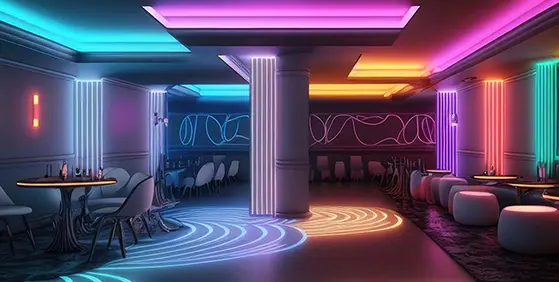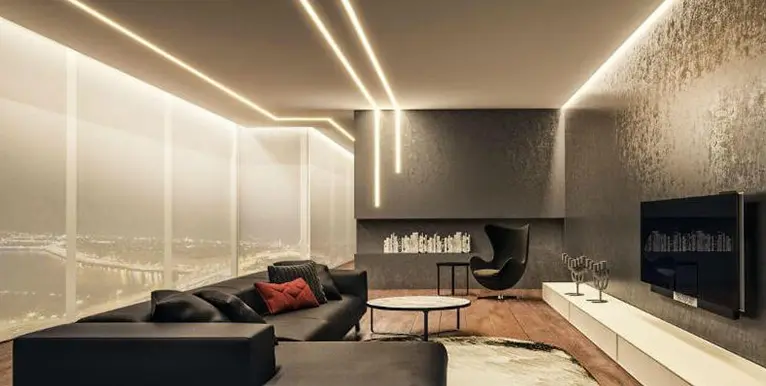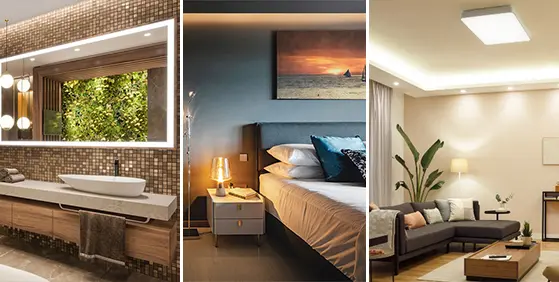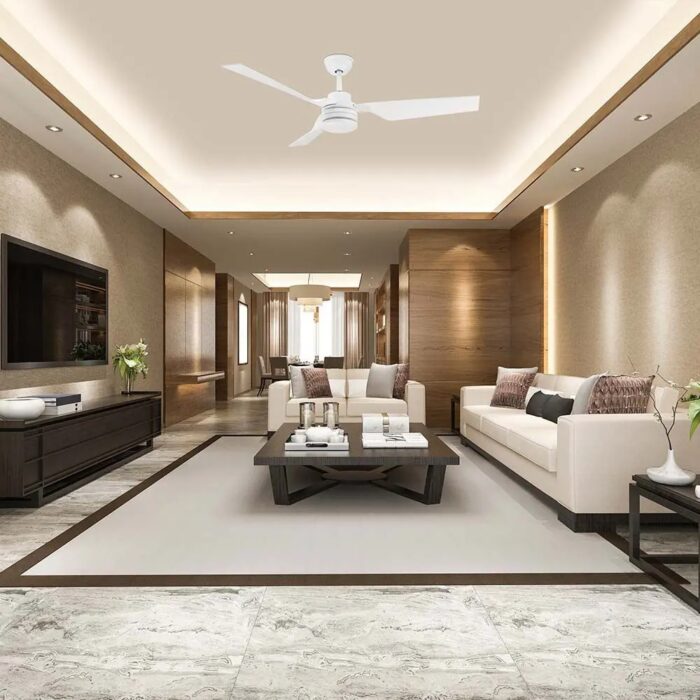How to Plan Living Room Lighting?
Life happens in the living room. Family life, social life and these days, even work life. It’s a multifunctional space, often the largest in your home, and requires layered lighting to manage everything that goes on, whether it’s chilling on the sofa, a work-from-home corner or hosting the family at Christmas.
By layering lighting at different temperatures in your living room, you can create a selection of lighting scenarios to pick and choose depending on which function the room is performing at any given time. Use warm and cosy for a glass of wine on the sofa with your favourite show or bright and cheerful when family visits.
What type of light is best for the living room?
A multifunctional space like the living room requires multifunctional lighting solutions and the three types of lighting to think about are ambient, accent and task.
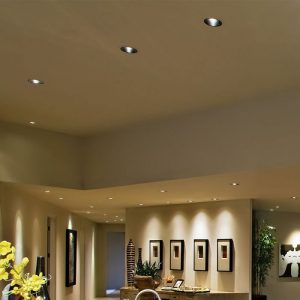
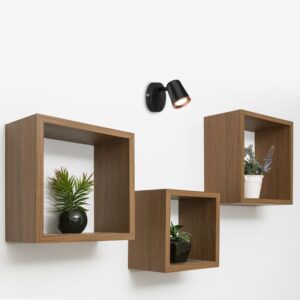
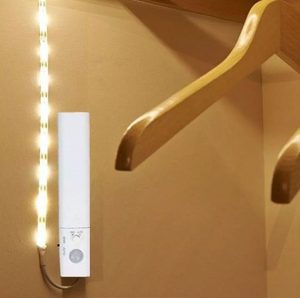
- Ambient lighting fills the space and sets the mood of the room.
- Accent lighting picks out or highlights a design feature within the room.
- Task lighting is for “doing” something – perhaps reading or working.
By layering your lighting design to include all three types you create a flexible space that can be lit appropriately for any occasion.
What LED light is best for the living room?
LED lighting now comes in every conceivable type of bulb and fitting, so can be used to replace older lightbulb types in any location. You can use them in pendant lighting, recessed lighting and side or floor lamps. Many LED lights are now dimmable
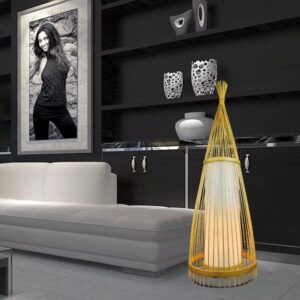
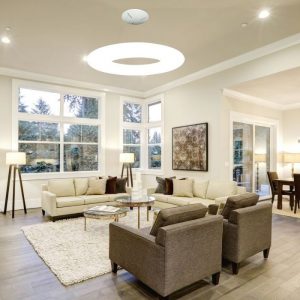
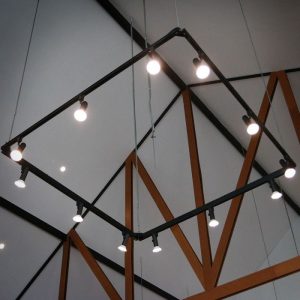
Avoid the temptation to place fixed lighting based on where your furniture sits as furniture tends to move as families grow and tastes change. Instead use side lamps and floor lamps that compliment a feature pendant in the middle of the room. Lighting can then be moved around as your furniture changes.
Avoid the temptation to treat the TV as a feature and light it accordingly. Light will just reflect off the surface causing glare. If a part of your living room is to be a work-from-home space, place it where it is least obtrusive and use subtle task lighting such as a desk lamp (retro desk lamps can be very stylish) or, for invisible task lighting, consider using LED strips, which we’ll discuss shortly, fixed under a shelf above your desk.
How can I make my living room brighter?
The simple answer is recessed ceiling lights. By fitting a grid of lights across the room you’ll have a discrete lighting solution that can turn a dark room bright at the touch of a button.
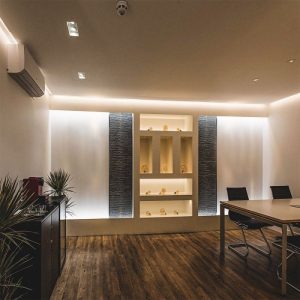
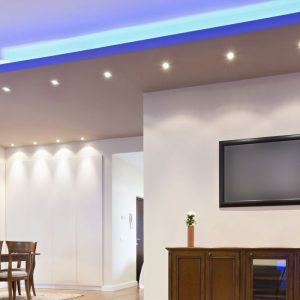
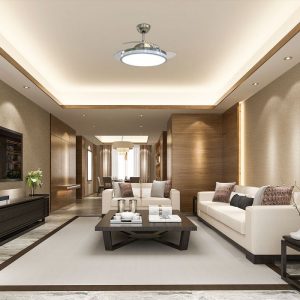
To avoid casting shadows on walls, your recessed lighting grid should start about one metre in from the edges, and the distance between lights will depend on your ceiling height. Lighting intensity as it reflects off a surface is measured in Lux. A good rule of thumb in the living room is 300 Lux for general lighting and 500 for task lighting.
If you want a really bright living room you could go up to 500 Lux but add dimmable LEDs so you can turn them down when you want a more relaxed atmosphere.
How many lumens or watts do you need to light a living room?
Thinking in wattage is so twentieth century. Wattage or Watts measures the amount of energy a bulb needs to emit a certain level of brightness. With modern lighting, mainly LEDs, using so much less power than older bulb types, wattage has gradually fallen out of practice. Lumens are the preferred measure of brightness.
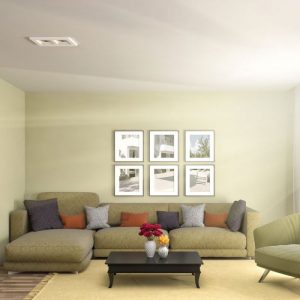
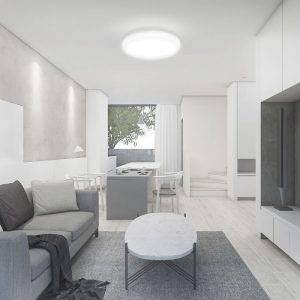
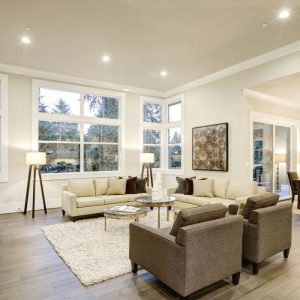
An old, 60W bulb, emitted 500 – 700 Lumens. An LED uses just 5 – 7 Watts to emit the same light so look for a 600 Lumen LED as a comparable replacement for a 60W bulb and a 1000 Lumen LED to replace a 100W bulb – and welcome to the twenty-first century.
FAQs
What colour temperature should a living room be?
Colour temperature is measured in Kelvin (K). The Kelvin scale runs from 1000K at the lower end, which emits warm orange light, to 10,000K at the top, emitting a cold blue/white light. Natural daylight sits somewhere in the middle.
Should a living room have a pendant light?
The ultimate accent light is one that accents itself. A statement pendant light in the centre of the room is both a statement piece about your sense of style and taste as well as adding to the ambient light in the room as a whole.
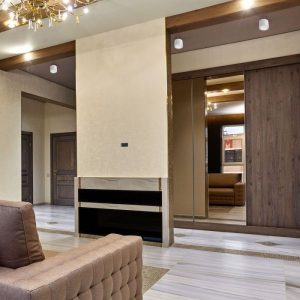
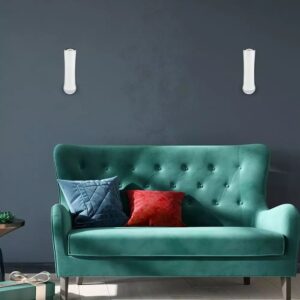
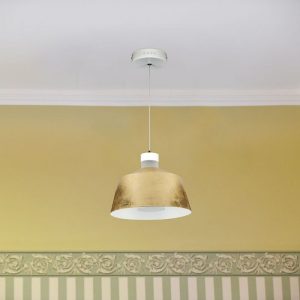
Vintage pendant lighting, whether Victorian, Edwardian, the ‘50s or ‘70s, will benefit from a vintage bulb to really sell the design. Unfortunately, bulbs from those eras are becoming harder to source and are highly energy hungry. Modern LEDs are up to 90% more energy-efficient than older types. Luckily LEDs also come in vintage styles so it’s possible to combine chic design with modern energy savings.
Where could LED strip lights be placed in the living room?
At the opposite end of vintage lighting lie LED strip lights. These are the latest thing in the lighting designer’s toolbox and are perfect to create accent lighting.
With a profile of just a couple of millimetres, LED strips can be fixed with adhesive under almost any surface to emit a glowing light that both highlights an edge and gives the effect of floating. Place them under bookshelves, side or coffee tables or even sofas to accent a design feature or give lightness to an otherwise bulky item of furniture.
Strip lighting can be cut to any length and comes in single colour or even programmable colours for added effect.
I control my TV from the sofa – what about my lighting?
Yes, you absolutely can. Smart lighting solutions mean you can use a controller just like your TV remote to turn lighting on and off or even change the colour. For even more convenience it’s possible to integrate your living room lighting into a smart home app and change the mood in your living room from your phone.
If you want to really live life in your living room, contact us today and we can talk you through all our LED lighting choices that can help you achieve your dream home.

